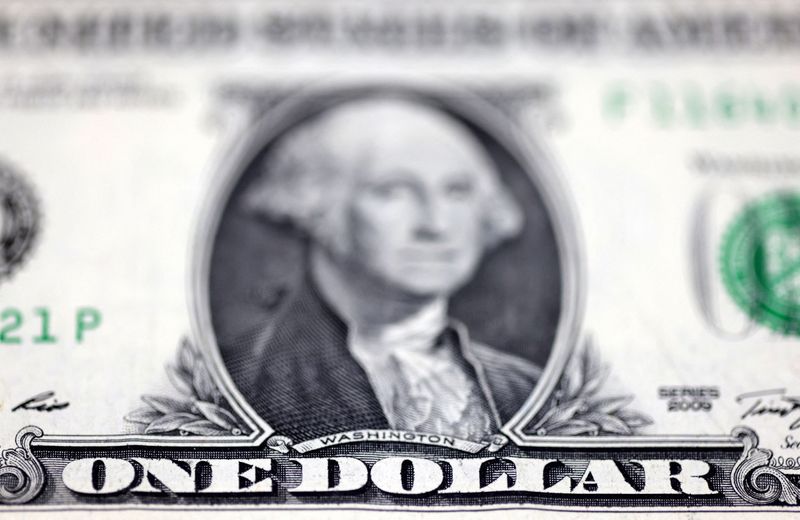
©Reuters. FILE PHOTO: The U.S. dollar banknote is seen in this illustration taken July 17, 2022. REUTERS/Dado Ruvic/Illustration/File Photo
By Rae Wee
SINGAPORE (Reuters) – The dollar fell slightly on Thursday as traders awaited a series of surveys of economic activity to gauge the health of major economies and what that might mean for the outlook for global interest rates.
Flash Purchasing Managers’ Index (PMI) data in the US, UK and eurozone will be released later in the day and will provide further clarity on the respective manufacturing and services sectors.
Before publication, the euro gained 0.14% to $1.0835, while the pound rose 0.08% to $1.2647.
Against the yen, the dollar fell 0.04% to 150.23.
“A look at the composite PMIs for the US, Europe and the UK shows that they are expanding at a faster pace or slowing to a decreasing pace,” said Matt Simpson, senior market analyst at City Index.
“This warns of upward pressure for growth and inflation, which ties into the ‘higher for longer’ narrative that traders don’t want to hear.”
The decline is 0.15% to 103.81. It has fallen more than 0.4% on the week so far, with the latest decline due to the global decline in bond yields earlier this week.
However, the index rose more than 2% for the year, as traders scaled back aggressive bets for a series of rate cuts by the Federal Reserve this year, which in turn kept the greenback supported.
The minutes of the Fed’s latest policy meeting released Wednesday reinforced the message that the central bank is in no rush to ease rates that officials still expect will begin to be lowered this year.
“There wasn’t much to say, they reiterated what we knew from the FOMC meeting,” said Tony Sycamore, market analyst at IG.
“I don’t think the market is as confident that we’re going to start to see the Fed cut rates. We know that core PCE (personal consumption expenditures) will be stronger next week, so that again pushes back expectations of US rate cuts. “
Traders are currently pricing in a roughly 30% chance that the Fed could begin easing rates in May, much lower than the more than 80% chance a month ago, according to the CME’s FedWatch Tool.
This followed recent data that showed U.S. producer and consumer prices rose more than expected in January, along with persistent strength in the country’s labor market.
Elsewhere, the Australian dollar rose 0.07% to $0.65565, while the New Zealand dollar hit a more than one-month high of $0.6205.
The Reserve Bank of New Zealand (RBNZ) meets next week, and while economists generally expect the bank to keep the interest rate at 5.5%, some see the risk of a hike, which has given some interest rate support.